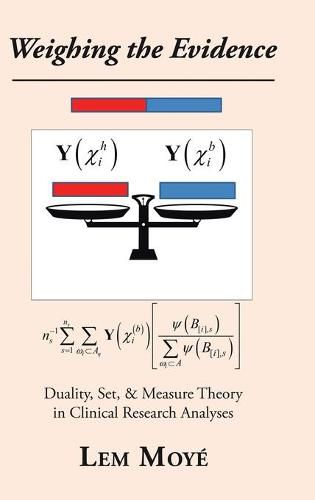Readings Newsletter
Become a Readings Member to make your shopping experience even easier.
Sign in or sign up for free!
You’re not far away from qualifying for FREE standard shipping within Australia
You’ve qualified for FREE standard shipping within Australia
The cart is loading…






This title is printed to order. This book may have been self-published. If so, we cannot guarantee the quality of the content. In the main most books will have gone through the editing process however some may not. We therefore suggest that you be aware of this before ordering this book. If in doubt check either the author or publisher’s details as we are unable to accept any returns unless they are faulty. Please contact us if you have any questions.
Clinical research is being strangled. Developed in the 1920’s, statistical hypothesis testing was accepted into mainstream medical research in the 1950s and served well to provide structure to clinical research. However statistical hypothesis testing was not developed specifically for clinical research, and has been forced to undergo continuous adaptations in order to maintain relavance. Despite this effort, it has not kept up with clinical research sophistication that now generates an abundance of analyses. Since it has been unable to adapt sufficiently, statistical hypothesis testing is stunting the growth of clinical research, maintaining its p-value dominance at an unacceptable cost. The thesis of this book is that clinical resesarch, with its need to assess benefit and risk, its safety perogative, and its plethora of resarch designs, requires an analysis rubric specifically designed for it. This new foundation is based on 1) the concept of duality, where a statistical effect size estimate can simultaneously provide evidence for benefit and evidence for harm, and 2) the notion that clinical research analyses can be partitioned into regions of analysis that can be weighted through the use of set and measure theory. The entire theory is provided from first principals, requiring only a rudimentary background in clincal research.
$9.00 standard shipping within Australia
FREE standard shipping within Australia for orders over $100.00
Express & International shipping calculated at checkout
This title is printed to order. This book may have been self-published. If so, we cannot guarantee the quality of the content. In the main most books will have gone through the editing process however some may not. We therefore suggest that you be aware of this before ordering this book. If in doubt check either the author or publisher’s details as we are unable to accept any returns unless they are faulty. Please contact us if you have any questions.
Clinical research is being strangled. Developed in the 1920’s, statistical hypothesis testing was accepted into mainstream medical research in the 1950s and served well to provide structure to clinical research. However statistical hypothesis testing was not developed specifically for clinical research, and has been forced to undergo continuous adaptations in order to maintain relavance. Despite this effort, it has not kept up with clinical research sophistication that now generates an abundance of analyses. Since it has been unable to adapt sufficiently, statistical hypothesis testing is stunting the growth of clinical research, maintaining its p-value dominance at an unacceptable cost. The thesis of this book is that clinical resesarch, with its need to assess benefit and risk, its safety perogative, and its plethora of resarch designs, requires an analysis rubric specifically designed for it. This new foundation is based on 1) the concept of duality, where a statistical effect size estimate can simultaneously provide evidence for benefit and evidence for harm, and 2) the notion that clinical research analyses can be partitioned into regions of analysis that can be weighted through the use of set and measure theory. The entire theory is provided from first principals, requiring only a rudimentary background in clincal research.